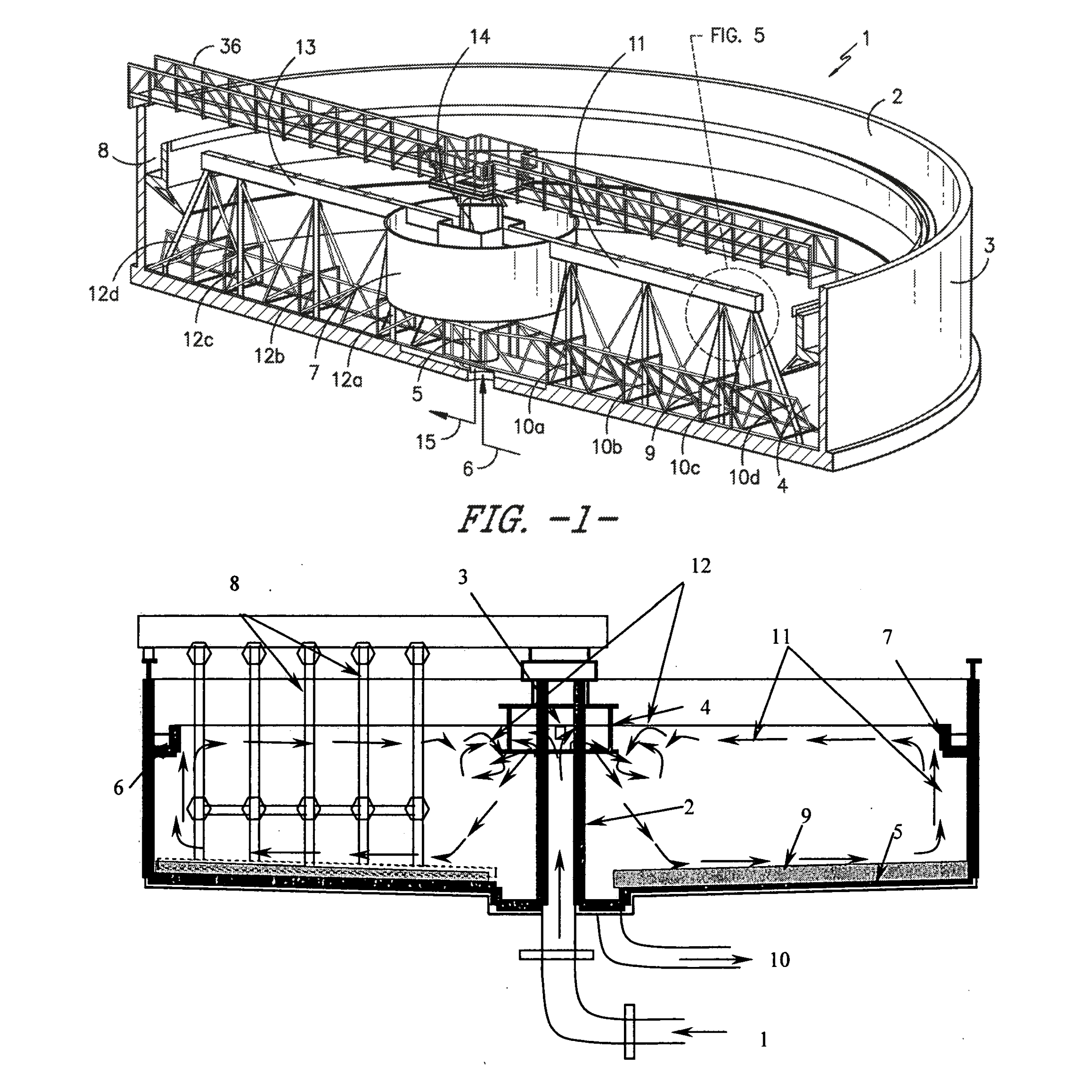
Water can also be understood as waste. In order for dirty water to be incorporated to the water cycle, it must undergo sewage treatment: the process of removing contaminants from municipal wastewater. Physical, chemical, and biological processes are used to remove contaminants and produce treated wastewater (or treated effluent) that is safe enough to release water into the environment. The construction of centralized sewage treatment plants began in the late 19th and early 20th centuries, principally in the United Kingdom and the United States.1 Since then, the standardized and globalized system has consisted in the concatenation of deposits with different functions. The water flow involves three stages, called primary, secondary and tertiary treatment.
Primary treatment consists of temporarily holding the sewage where heavy solids can settle to the bottom while oil, grease and lighter solids float to the surface. The settled and floating materials are removed and the remaining liquid may be discharged or subjected to secondary treatment.
Secondary treatment removes dissolved and suspended biological matter. It is typically performed by water-borne microorganisms in a managed habitat. In addition, it may require a separation process to remove the micro-organisms from the treated water prior to discharge or tertiary treatment.
Tertiary treatment. Treated water is sometimes disinfected chemically or physically (for example, by lagoons and microfiltration) prior to discharge into a stream, river, bay, lagoon or wetland, or it can be used for the irrigation of a golf course, greenway or park. If it is sufficiently clean, it can also be used for groundwater recharge or agricultural purposes.
Secondary Clarifier Deposit
Sources: https://patents.google.com/patent/US7637379B2/de
https://uspto.report/patent/grant/10,751,647
Sources: https://patents.google.com/patent/US7637379B2/de
https://uspto.report/patent/grant/10,751,647
- Wastewater Treatment Process, https://www.britannica.com/technology/wastewater-treatment
